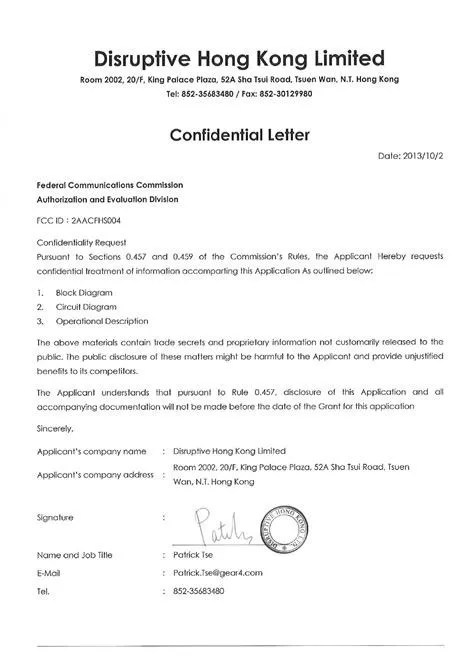What is a Disruptive Cover Letter?
A disruptive cover letter is designed to break away from the traditional, formulaic approach to job applications. It’s about grabbing the reader’s attention immediately and showcasing your unique value proposition. Instead of rehashing your resume, a disruptive cover letter aims to tell a compelling story, highlight specific achievements, and demonstrate how you can solve the employer’s problems. It focuses on standing out from the crowd by being memorable and leaving a lasting impression. Think of it as your personal brand statement, emphasizing your key strengths and what makes you the perfect fit for the role. This approach allows you to show your personality and creativity, setting the stage for a more engaging dialogue with the hiring manager.
Why Use a Disruptive Cover Letter?
In a competitive job market, a standard cover letter often gets lost in a sea of applications. A disruptive cover letter helps you cut through the noise. It immediately captures the recruiter’s interest, signaling that you are not just another applicant but someone who is proactive and creative. By showcasing your personality and skills in a unique way, you increase your chances of getting an interview. Furthermore, it demonstrates your understanding of the company’s needs and your ability to think strategically. A well-crafted disruptive cover letter communicates your passion and enthusiasm, proving that you are genuinely interested in the position and the company. It’s a powerful way to make an impact and differentiate yourself from other candidates.
The 5 Top Disruptive Cover Letter Examples
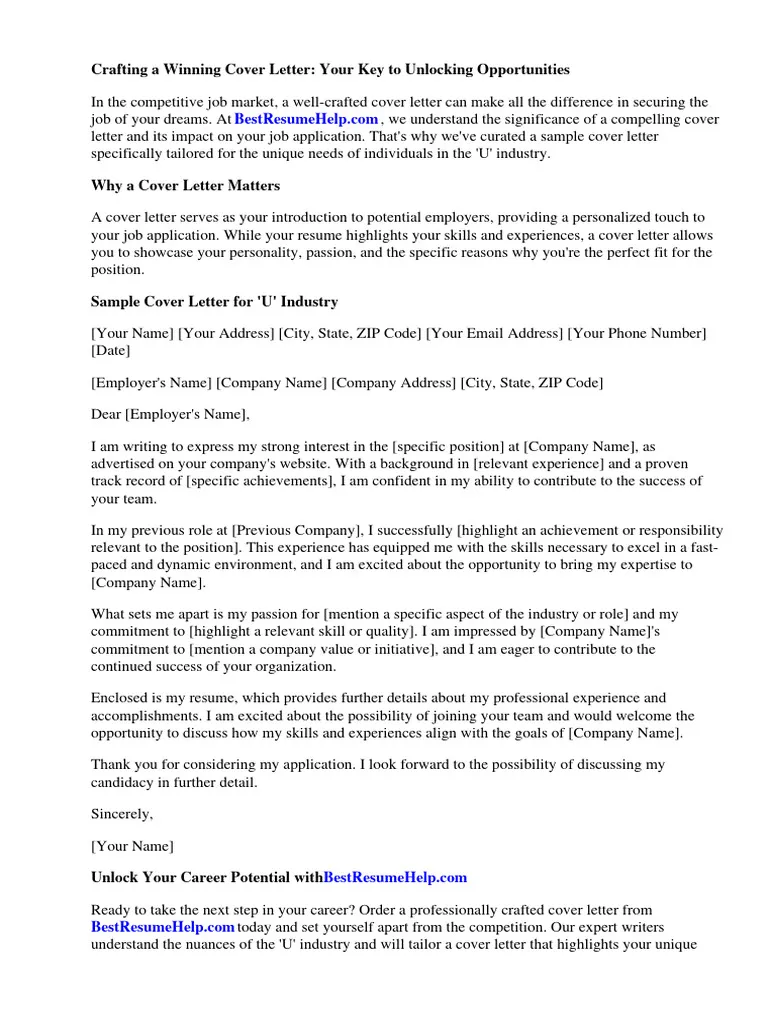
Here are five examples of disruptive cover letters that can help you make a lasting impression. These examples demonstrate how to break the mold and create a cover letter that captures attention and highlights your unique value. Each example offers a different approach, from bold statements to storytelling, giving you a variety of options to choose from depending on your personality and the job you’re applying for. Remember that the key is to align your approach with the company culture and the specifics of the job description.
Example 1 The Bold Statement Cover Letter
This type of cover letter immediately grabs attention with a strong, unconventional opening. It could include a provocative statement, a surprising statistic, or a bold claim about your skills. The goal is to shock the reader and make them want to read more. The tone should be confident, direct, and focused on what you can bring to the table. For example, instead of a generic greeting, you might start with a sentence that directly addresses the company’s challenges and how you can solve them. This approach is best for roles where a proactive and results-oriented mindset is valued, such as in sales, marketing, or leadership positions. It’s crucial to back up your bold claims with solid evidence from your previous experiences.
How to Write a Bold Statement Cover Letter
Start with an impactful hook. Identify a specific problem the company faces and state your ability to solve it. Quantify your achievements with numbers and data to back up your claims. Focus on the value you bring and how you can contribute to the company’s success. Keep the language concise and assertive. End with a clear call to action, such as requesting an interview to discuss your ideas further. Make sure your claims are truthful and relevant to the job. Proofread carefully to ensure your bold statements are well-supported and grammatically correct.
Example 2 The Storytelling Cover Letter
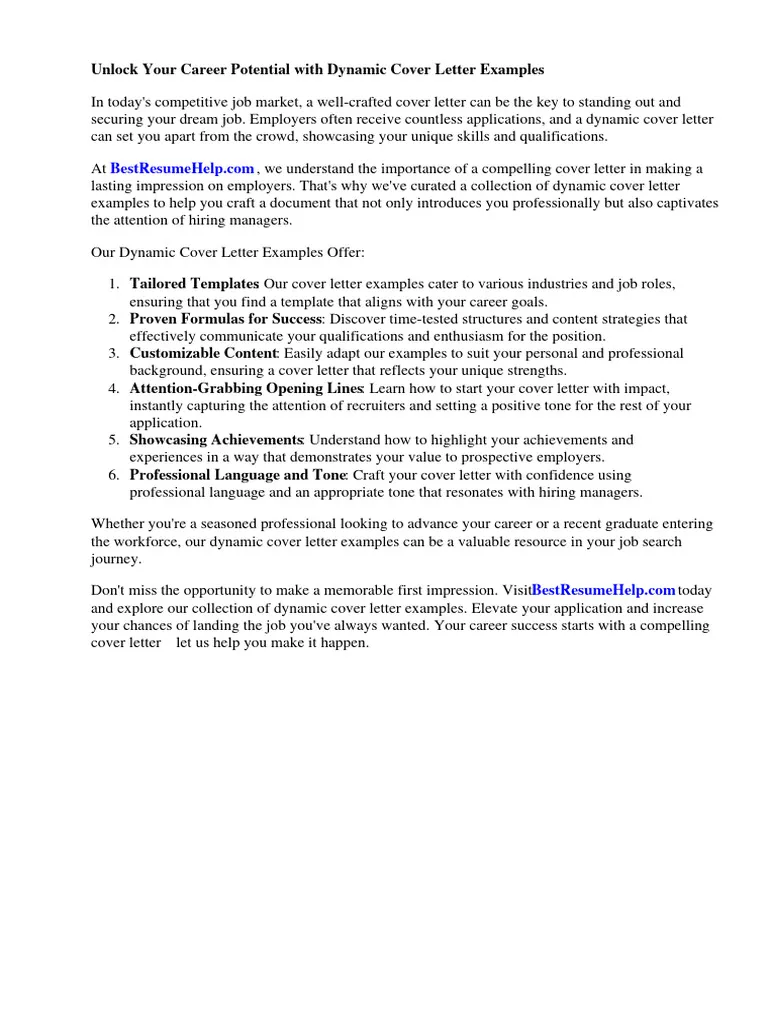
This approach uses narrative to engage the reader and create a personal connection. Instead of simply listing your skills and experience, you tell a story that illustrates your abilities, problem-solving skills, and passion. This is great for creative roles or positions where soft skills like communication and empathy are important. The story should be relevant to the job and highlight a specific achievement or experience that showcases your ability to excel. The narrative format makes the cover letter more memorable and allows you to connect with the hiring manager on a more human level. This approach can be particularly effective in industries like journalism, design, or any role that values creativity and narrative skills. The story needs to be concise and to the point to avoid losing the reader’s attention.
How to Craft a Storytelling Cover Letter
Start with a compelling opening that introduces the situation. Set the scene and introduce a challenge you faced. Describe the actions you took and the skills you used to overcome the challenge. Highlight the results you achieved and how they benefited the company or project. Connect the story to the job requirements and explain how your experience aligns with the role. Conclude by summarizing your key takeaways and reiterating your enthusiasm for the opportunity. Make sure the story is authentic and engaging, with a clear beginning, middle, and end.
Example 3 The Value Proposition Cover Letter
This type of cover letter focuses on the value you bring to the company, emphasizing the specific benefits you offer. It’s about understanding the company’s needs and demonstrating how you can address them. The letter should highlight your relevant skills, experiences, and achievements, directly linking them to the job requirements and the company’s goals. This is perfect for roles where demonstrating a clear understanding of the company’s objectives and showcasing your ability to contribute to those objectives is paramount. It emphasizes your ability to solve problems and deliver tangible results. Tailor your value proposition to the specific needs of the role and the company, showing how your unique skills and experience make you the best candidate.
How to Create a Value Proposition Cover Letter
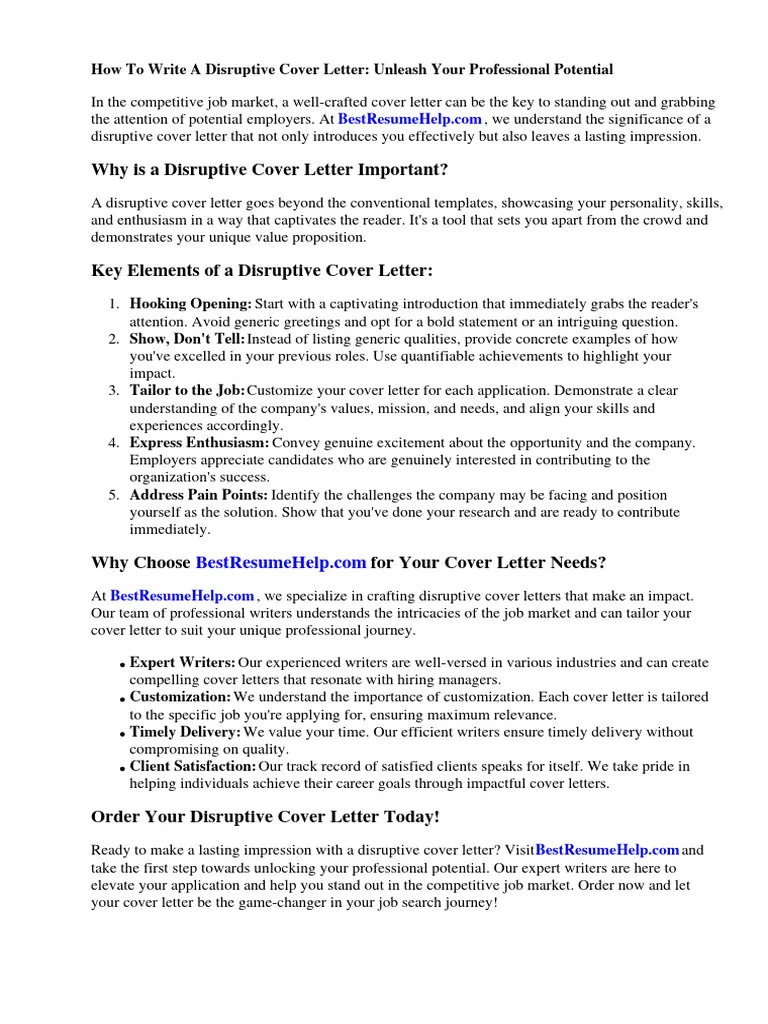
Research the company and identify its key priorities and challenges. Analyze the job description and identify the required skills and qualifications. Craft a clear and concise value proposition that highlights your relevant skills and experiences. Quantify your achievements with specific results and data. Explain how your skills can address the company’s needs and contribute to its success. Tailor your value proposition to each specific job application, demonstrating your understanding of the role and the company. End with a strong call to action, inviting the hiring manager to learn more about your capabilities.
Example 4 The Problem/Solution Cover Letter
This approach identifies a problem the company is facing and offers a solution, positioning you as a proactive problem-solver. This format demonstrates your understanding of the business and your ability to think strategically. It’s effective for roles where initiative and problem-solving skills are essential. The letter should start by identifying a challenge the company faces and then present your experience and skills as the solution. This demonstrates your ability to analyze problems, develop strategies, and implement effective solutions. This approach is particularly useful in industries such as consulting, project management, or any role where you are expected to identify and resolve issues.
How to Write a Problem/Solution Cover Letter
Research the company to identify current challenges or areas for improvement. Describe the problem in a concise and clear manner. Explain how your skills and experience can help address the problem. Provide specific examples of how you’ve solved similar problems in the past. Present a clear and actionable solution that aligns with the company’s goals. Quantify the potential benefits of your solution, if possible. Conclude by reiterating your interest in the role and your confidence in your ability to contribute to the company’s success.
Example 5 The Results-Oriented Cover Letter
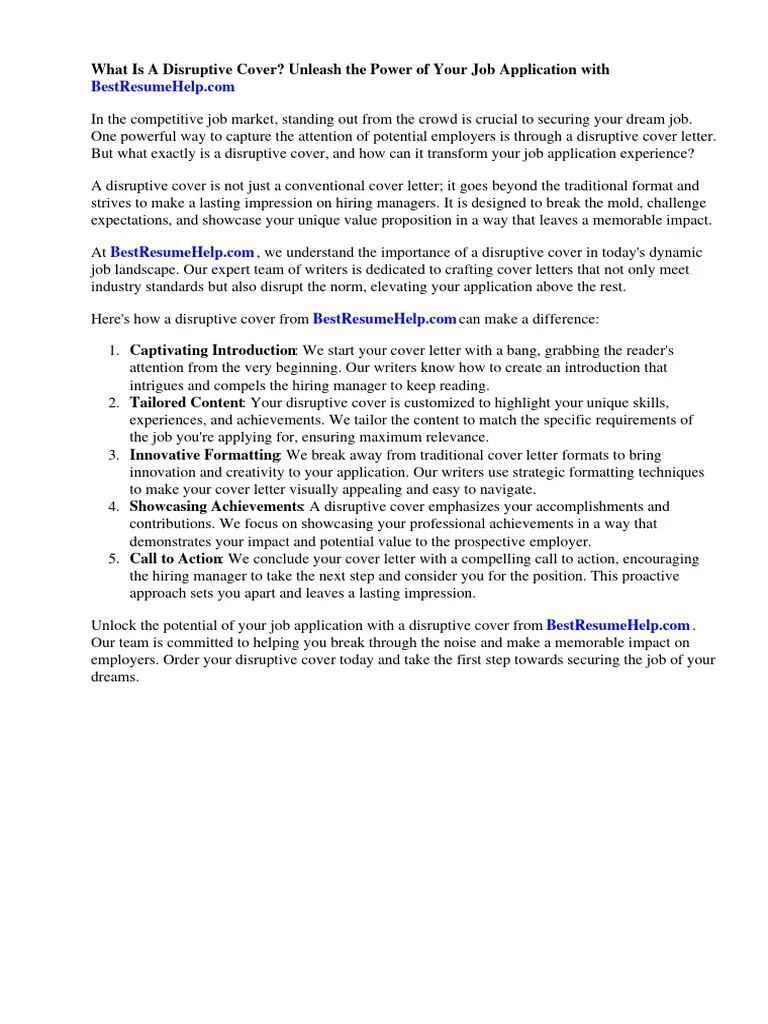
This cover letter focuses on your achievements and the tangible results you’ve delivered in previous roles. It’s about demonstrating your impact and showing what you can accomplish for the company. This is effective for positions where performance and measurable outcomes are highly valued. Use numbers, data, and specific examples to showcase your accomplishments. Instead of just listing your responsibilities, quantify your achievements by mentioning how you increased sales, improved efficiency, or reduced costs. This approach leaves a lasting impression by illustrating the value you bring to the table. This is excellent for roles in sales, marketing, finance, and operations where results are easy to quantify. Showcasing your track record of success will significantly boost your application.
How to Highlight Your Results in a Cover Letter
Start with a brief overview of your responsibilities. Quantify your achievements with specific numbers and data. Use action verbs to describe your accomplishments. Highlight the impact of your actions, such as increased revenue or improved efficiency. Provide context for your results, explaining the challenges you faced and how you overcame them. Tailor your examples to the specific requirements of the job. End with a clear statement about your ability to deliver similar results in the new role. Focus on the impact of your achievements.
Key Elements to Include in Your Disruptive Cover Letter
Your disruptive cover letter should include a compelling opening, a clear value proposition, and specific examples that showcase your skills and achievements. Make sure to tailor the letter to the specific job and company. It should be concise, well-written, and free of errors. Proofread your letter carefully. Highlight your unique selling points and what makes you stand out from other applicants. Use a professional but distinctive tone that reflects your personality and skills. Include a clear call to action, encouraging the hiring manager to contact you for an interview. Make your cover letter stand out by being creative, engaging, and memorable. Remember to proofread and tailor to each application.
Tips for Writing a Winning Disruptive Cover Letter
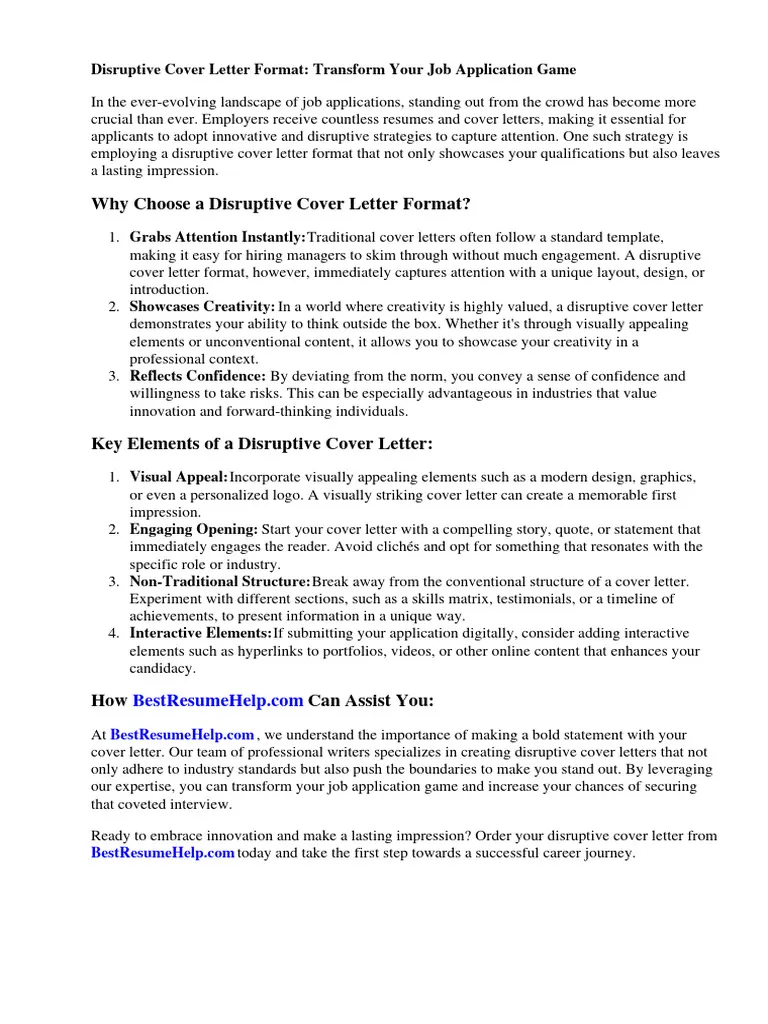
To write a winning disruptive cover letter, research the company and understand its needs. Tailor your letter to the specific job and highlight relevant skills and experiences. Use a unique and engaging tone. Focus on your achievements and the value you can bring. Quantify your results with numbers and data. Keep the letter concise and easy to read. Proofread for errors and ensure a professional presentation. Make sure your letter reflects your personality and enthusiasm for the role. Proofread and revise your cover letter to make it shine and stand out from the crowd. A well-crafted cover letter will help you get the job.
